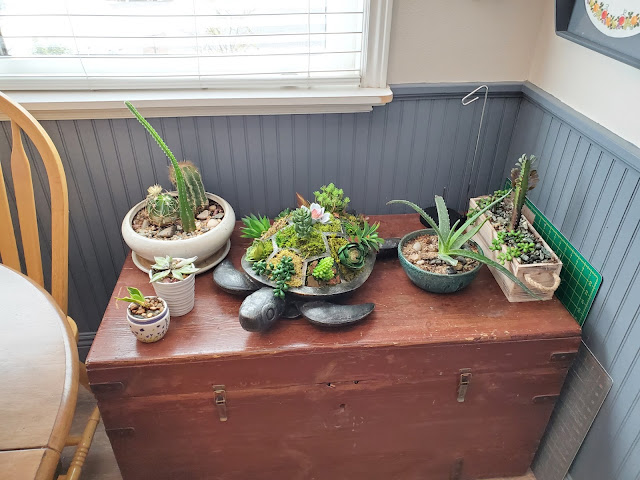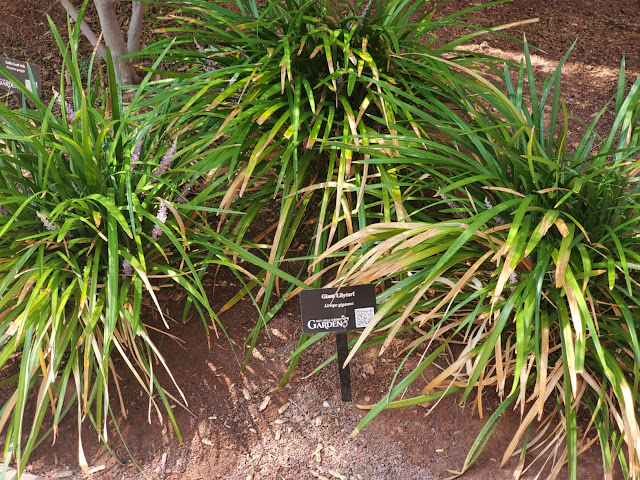 |
| This is what my turtle planter looked like after its original planting back in April. |
This past April, my parents got me the most amazing planter for my birthday. It is a resin sea turtle with room for 13 different plants. Oh, I was in heaven. I went to my favorite shop for cacti and succulents - Moss & Timber - and spent I don't know how long picking the perfect mix of plants. I got them planted, packed them in with moss, and enjoyed the beauty of it.
 |
| And the turtle more recently. Poor thing. |
And this is where I got creative. I have several areas in the house where I cannot grow plants. We have plant ledges in the living room that are dark and almost impossible to water. My bathroom is another area. It has only a tiny window that faces north. My solution is to visit the craft store and get fake plants. The way they are made these days, you need to look closely to tell if they are real or not. So I put the substitutes in those areas to get the look of plants without the upkeep.
 |
| I repurposed shipping Styrofoam and brown paper from a shopping bag instead of using floral foam to get the turtle ready for "planting". |
And that is what I decided to do with my turtle. I repotted the two remaining plants and then cleaned out all the potting soil and moss. I didn't have any floral foam, but I had some Styrofoam from a package I received so I repurposed that to fill in the plant holes. Then I covered the Styrofoam with brown paper from a grocery bag and got ready to "plant". I also took a day to let the burns heal on my fingers. The hot glue gun is amazing, but I have never mastered the art of using it without getting the glue on myself.
 |
| Ready to "plant". I love the selection of plants I got. |
I ended up ordering a set of 14 artificial succulents off of Etsy. I was ecstatic when they arrived. They are high quality and beautiful. I also ordered two combo packs of preserved moss. I glued the plants in place, using the hot glue again and poking the stems through the paper into the Styrofoam. Then I added the moss, making sure I didn't have the same kind on adjacent plants.
 |
| Finished! I love how it came out. |
I am so pleased with how it came out! Now I have my beautiful turtle planter and I no longer need to juggle the needs of 13 different plants.
The moral of this story is: If at first you don't succeed, fake it. Literally. There is no shame in using artificial plants in difficult areas.

























